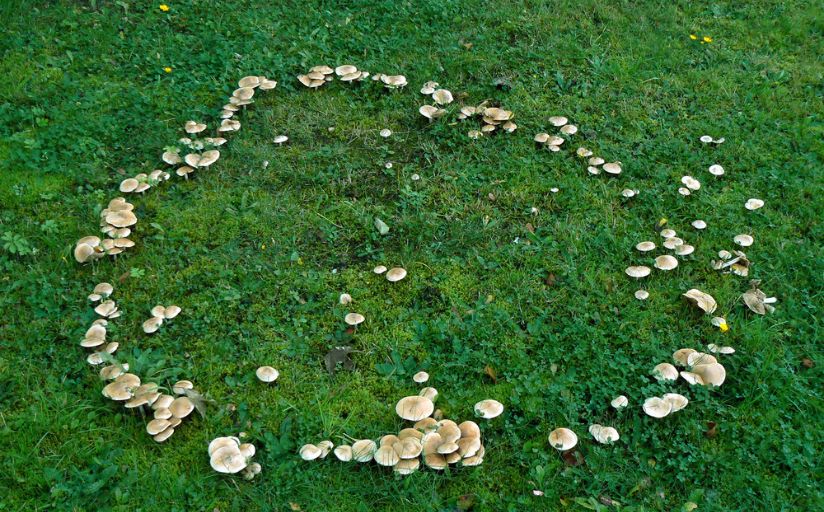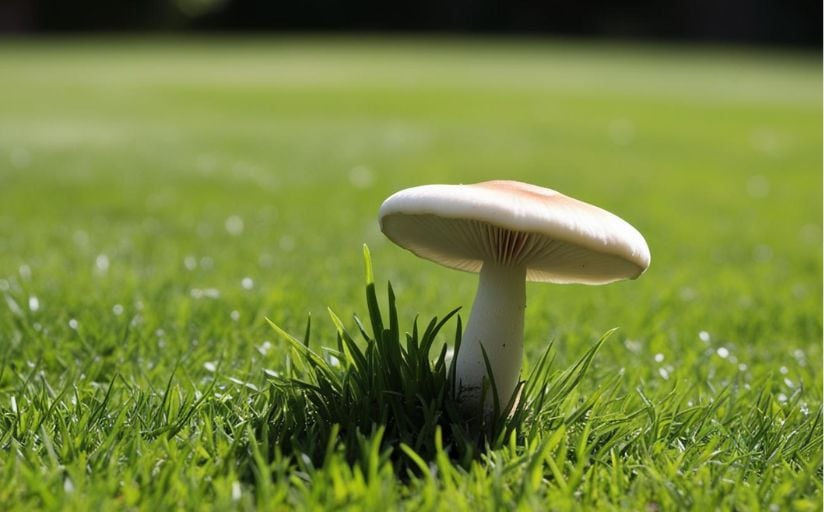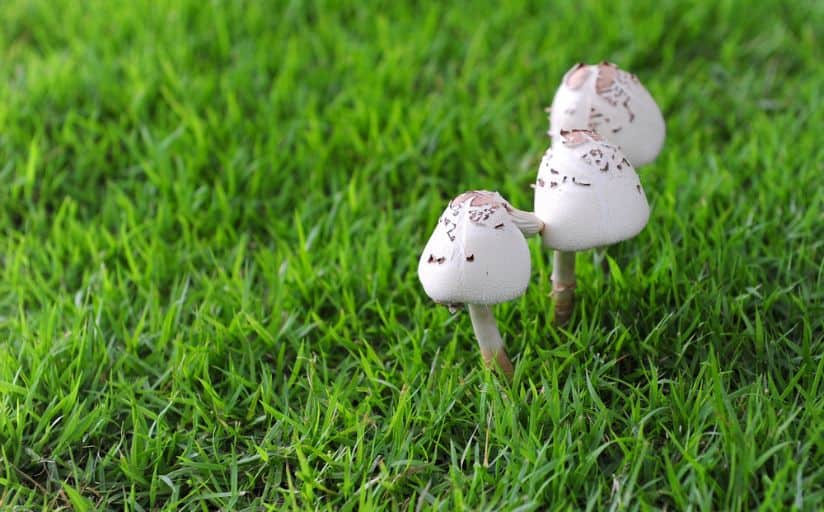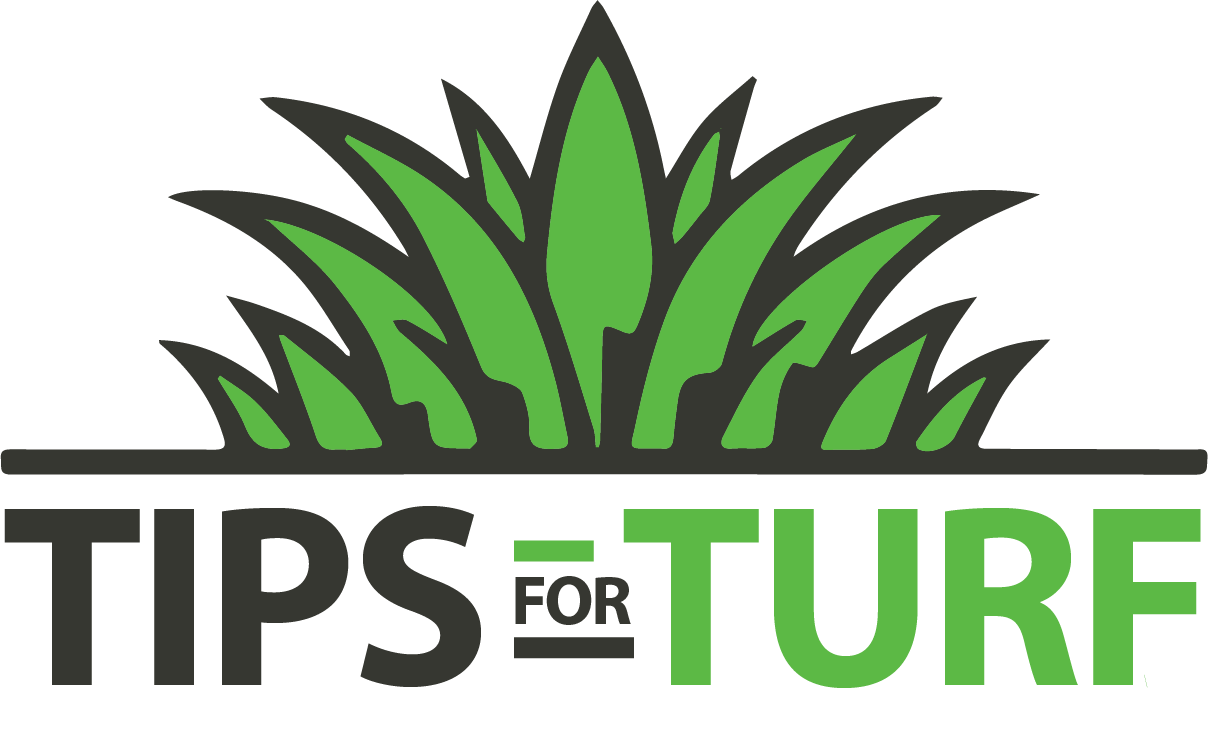Have you noticed mushrooms growing in your lawn? Although they may seem unsightly or worrisome, these fungi are quite common and can actually mean that your lawn is healthy. Let’s talk about why mushrooms grow on lawns sometimes, whether they are poisonous, and what this means for your grass’s health.
(If you make a purchase using the links in this post, we may earn a commission.)
Are Mushrooms in Lawns Good or Bad?
Lawn mushrooms can be both good and bad. On the good side, mushrooms help break down organic matter in your soil, which releases nutrients that support strong grass growth. Their presence means that your soil can sustain a balanced, living ecosystem. And that’s important because you can’t have a healthy lawn without healthy soil.
On the bad side, certain mushrooms can be poisonous if children or poets eat them, and they can sometimes spread quickly. If you’re worried about a little one’s safety or think that mushrooms ruin the look of your yard, you can remove them for your peace of mind, but just make sure you do so safely.

How To Get Rid of Mushrooms in Your Lawn
If you see mushrooms growing in your lawn, you can manage them effectively by doing the following.
Don’t Let Your Lawn Get Soggy
Mushrooms love damp conditions, so it helps to water your lawn only when it really needs it. The best time to water the lawn is early in the day. This lets your grass dry out by evening, which helps prevent the soggy environment mushrooms need to grow.
Mow Regularly
Keeping your grass at the right height can discourage both weeds and fungus from growing. Mowing regularly also helps your lawn look neat and healthy, which can reduce the chance of mushrooms popping up.
Aerate and Dethatch
Aerating your lawn allows oxygen and water to reach the roots more effectively, which helps reduce trapped moisture in the soil. Dethatching removes dead grass and other debris that mushrooms feed on, which can make your lawn less inviting to fungi.
Fix Drainage Issues
You can stop mushrooms growing in your lawn by aerating. Aerating your lawn helps to improve airflow and reduce puddles, which can discourage mushrooms from growing since they love standing water.
Adjust Soil Conditions
Lawn mushrooms prefer specific pH levels, so it helps to do a soil test to find out if your soil is too acidic or alkaline. Adjusting the pH creates a less friendly environment for fungi, which helps your grass stay healthier, too.
Clear Organic Waste
Fallen leaves, branches, and pine cones give mushrooms a food source once they start to decay. Removing this debris denies mushrooms the nutrients they need to grow, which makes your yard less appealing to fungi.
Apply Nitrogen-Rich Fertilizers
Nitrogen helps break down organic material faster. The quicker that debris decomposes, the fewer nutrients remain for mushrooms to feed on. Just make sure you don’t apply too much nitrogen because you can do more harm than good.
Use our nitrogen lawn fertilizer calculator to help you calculate how much nitrogen you should apply to your lawn.
Remove by Hand
Pull mushrooms out by hand before they have a chance to release any spores. Wear gloves and put the mushrooms into a sealed bag so you’re not letting any spores escape onto your lawn.

Are Lawn Mushrooms Poisonous?
Some mushrooms may be toxic. The safest approach is to remove any unknown mushrooms with gloves. If you want to identify them, reach out to a local expert, like a mycologist or extension office. That way, you avoid risky fungi while still letting healthy organisms enrich your soil.
White Mushrooms
White mushrooms often have a good reputation—probably because button mushrooms are so popular to eat. However, just because many white mushrooms are edible doesn’t mean all of them are safe. In fact, some white mushrooms (such as the deadly Amanita species) are poisonous, while others are completely harmless.
If you see white mushrooms in your lawn and don’t know what they are, don’t leave them around, and certainly don’t eat them!
Black Mushrooms
Black mushrooms in your lawn might be “inky caps” or other varieties that turn black as they mature and disintegrate. (They literally dissolve into a black goo, which is pretty nasty to look at but usually harmless.) Most inky caps aren’t poisonous on their own but can cause adverse reactions when eaten with alcohol. Other black-colored mushrooms exist too, so there’s no guarantee they’re harmless. Err on the side of caution and remove them if you’re unsure.
Small Brown Mushrooms
Small brown mushrooms in your lawn are probably the most common of all. Many little brown mushrooms are hard to identify, and some can be toxic. Even expert mycologists can have trouble telling them apart just by sight. If there’s any doubt, treat them as potentially dangerous.
BUY – If all this mushroom talk has you curious (but you still want to be safe), check out the Peterson Field Guide to Mushrooms of North America. It’s packed with photos, fun facts, and tips on how to identify different types of fungi—while keeping your lawn (and loved ones) out of harm’s way.

Should You Use Fungicides To Remove Mushrooms?
Fungicides don’t always solve the real problem behind lawn mushrooms. In fact, they may just mask the problem if you have a soggy lawn and decaying debris scattered about your property. Fungicides can also knock out the good microbes your grass needs.
It’s usually better to focus on soil drainage, clearing out organic clutter, and being mindful of your watering habits. These simple, natural steps discourage mushrooms without messing up the healthy balance in your lawn.
Say Goodbye to Mushrooms Growing in Your Lawn!
Mushrooms belong on a pizza, not in your yard. By taking care of your lawn, you can discourage mushrooms from growing while promoting strong, healthy grass. These simple steps help your yard stay inviting for your loved ones and keep those unexpected fungi from stealing the spotlight.

